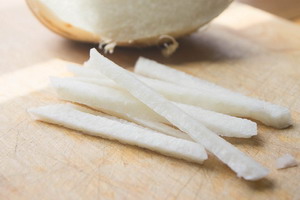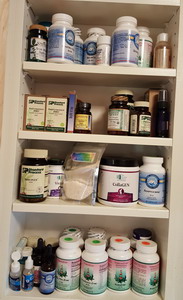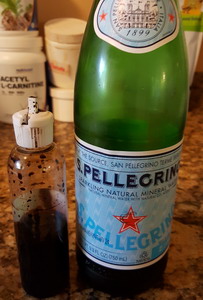Categories
 Over the last several years I have been focusing on the damaging effects of food toxins and sensitivities on our bodies. I have been testing and adjusting the body for food sensitivities since 1980, but recently I have attended to a huge arena of other negative food reactions that don’t register as either food sensitivities or allergies. Dr. Gundry got me started in this direction with his book on plant lectins, “The Plant Paradox” back in 2017. Since then I have delved into all sorts of plant toxins such as oxalates, phytates, tannins, alkaloids, glycosides, histamines, and on and on. The bottom line is that there are a lot of plant poisons that plants produce to keep themselves from being eaten by us, bugs, slugs, bacteria, molds, and viruses. They are sitting targets, so they fight back by producing poisons to discourage us from eating them.
Over the last several years I have been focusing on the damaging effects of food toxins and sensitivities on our bodies. I have been testing and adjusting the body for food sensitivities since 1980, but recently I have attended to a huge arena of other negative food reactions that don’t register as either food sensitivities or allergies. Dr. Gundry got me started in this direction with his book on plant lectins, “The Plant Paradox” back in 2017. Since then I have delved into all sorts of plant toxins such as oxalates, phytates, tannins, alkaloids, glycosides, histamines, and on and on. The bottom line is that there are a lot of plant poisons that plants produce to keep themselves from being eaten by us, bugs, slugs, bacteria, molds, and viruses. They are sitting targets, so they fight back by producing poisons to discourage us from eating them. I avoided all plants for several months and did a carnivore diet. This was very successful as far as general health and losing weight, but nothing but beef and salt every day for months on end got very boring. As a consequence, I started cautiously trying plant foods that I thought might be relatively safe. I began with coconut milk, which seemed to work quite well. As I added in other foods I did not notice any particular reactions, but my weight started to climb, so I know I was reacting to something. I am backtracking now and trying to create recipes of foods I think will be safe.
I avoided all plants for several months and did a carnivore diet. This was very successful as far as general health and losing weight, but nothing but beef and salt every day for months on end got very boring. As a consequence, I started cautiously trying plant foods that I thought might be relatively safe. I began with coconut milk, which seemed to work quite well. As I added in other foods I did not notice any particular reactions, but my weight started to climb, so I know I was reacting to something. I am backtracking now and trying to create recipes of foods I think will be safe. At least half of the population appears to be sensitive to the nightshade family veggies – tomatoes, potatoes, chili peppers, and eggplant. Yet one of America’s favorite condiments is ketchup. So I decided to see if I could create a ketchup without tomatoes or sugar. I call this ketchup replacement Jicup (pronounced like hiccup), since the main ingredient is jicama. Several people that I have had taste test this recipe have said it tastes just like ketchup, so here goes. Peel and slice up one medium jicama, ½ a beet, and ½ an onion. Steam these until they are well cooked. Once steamed, put them into a large frypan along with a savory fat like beef fat or bacon grease and fry until the onions caramelize. Allow them to cool a bit then put everything into a high-speed blender. Add in 2 tablespoons of white vinegar, 1 tablespoon each of
At least half of the population appears to be sensitive to the nightshade family veggies – tomatoes, potatoes, chili peppers, and eggplant. Yet one of America’s favorite condiments is ketchup. So I decided to see if I could create a ketchup without tomatoes or sugar. I call this ketchup replacement Jicup (pronounced like hiccup), since the main ingredient is jicama. Several people that I have had taste test this recipe have said it tastes just like ketchup, so here goes. Peel and slice up one medium jicama, ½ a beet, and ½ an onion. Steam these until they are well cooked. Once steamed, put them into a large frypan along with a savory fat like beef fat or bacon grease and fry until the onions caramelize. Allow them to cool a bit then put everything into a high-speed blender. Add in 2 tablespoons of white vinegar, 1 tablespoon each of  fish sauce and molasses, ¼ teaspoon each of black pepper, nutmeg, and cumin. Add in ¼ cup Sirkin syrup or oligosaccharide syrup and blend on high for several minutes. At this point, you need to taste your jicup to see if you want to add stevia to give it just the sweetness you like. It is easy to overdo the stevia, so add just a tiny bit at a time. When you get that perfect sweet spot, you will be amazed at how much like traditional ketchup this product tastes.
fish sauce and molasses, ¼ teaspoon each of black pepper, nutmeg, and cumin. Add in ¼ cup Sirkin syrup or oligosaccharide syrup and blend on high for several minutes. At this point, you need to taste your jicup to see if you want to add stevia to give it just the sweetness you like. It is easy to overdo the stevia, so add just a tiny bit at a time. When you get that perfect sweet spot, you will be amazed at how much like traditional ketchup this product tastes. Another regular in our diet has become something we affectionately call mother’s milk. This is a blend of the semi-essential amino acids glycine, taurine, and glutamine plus the oil-based vitamins A, D, E, & K all mixed into coconut milk and my C8 brain boost with stevia and either vanilla or cocoa powder. As a bonus, I add in a fair amount of creatine, acetyl l-carnitine, l-carnosine, colostrum, and phosphatidylcholine. I know this sounds like a crazy bunch of stuff, but blended all together with water it makes something like milk which I drink straight and Ellen mixes with her cold-brewed coffee when we first get up in the morning. I make a 2-quart batch a couple of times a week and keep it in the fridge just like a carton of milk.
Another regular in our diet has become something we affectionately call mother’s milk. This is a blend of the semi-essential amino acids glycine, taurine, and glutamine plus the oil-based vitamins A, D, E, & K all mixed into coconut milk and my C8 brain boost with stevia and either vanilla or cocoa powder. As a bonus, I add in a fair amount of creatine, acetyl l-carnitine, l-carnosine, colostrum, and phosphatidylcholine. I know this sounds like a crazy bunch of stuff, but blended all together with water it makes something like milk which I drink straight and Ellen mixes with her cold-brewed coffee when we first get up in the morning. I make a 2-quart batch a couple of times a week and keep it in the fridge just like a carton of milk. Glycine builds connective tissue and counters the effect of the herbicide glyphosate (Roundup), taurine is essential in over 200 metabolic pathways in the body, glutamine and colostrum help heal the gut lining, A, D, and K build bone and support the immune system, E protects blood vessels. Coconut milk and C8 both feed the brain’s energy system while choline is turned into the main brain neurotransmitter acetylcholine. Creatine supplies energy to the muscles while acetyl l-carnitine improves mitochondrial function for better brain and heart energy production. L-carnosine actually reverses the damage caused to nerves and blood vessels from glycation caused by sugar in the diet. As you can see, mother’s milk does a boatload of stuff. On and off I also add my Gut Healer blend of prebiotic fibers into the mother’s milk, as my gut tells me to.
Glycine builds connective tissue and counters the effect of the herbicide glyphosate (Roundup), taurine is essential in over 200 metabolic pathways in the body, glutamine and colostrum help heal the gut lining, A, D, and K build bone and support the immune system, E protects blood vessels. Coconut milk and C8 both feed the brain’s energy system while choline is turned into the main brain neurotransmitter acetylcholine. Creatine supplies energy to the muscles while acetyl l-carnitine improves mitochondrial function for better brain and heart energy production. L-carnosine actually reverses the damage caused to nerves and blood vessels from glycation caused by sugar in the diet. As you can see, mother’s milk does a boatload of stuff. On and off I also add my Gut Healer blend of prebiotic fibers into the mother’s milk, as my gut tells me to. The real reason I created mother’s milk for Ellen and I is because I really am not fond of swallowing a bunch of pills every day. As much as possible I try to take my supplemental nutrients in powder form added to some sort of liquid. Nutrients that I feel are necessary that taste really nasty are the ones I still end up taking as capsules – ones like turmeric, vitamin B, and berberine. In liquid form, all these other wonderful nutrients go down the hatch very easily. Easy is nice. I prefer easy.
The real reason I created mother’s milk for Ellen and I is because I really am not fond of swallowing a bunch of pills every day. As much as possible I try to take my supplemental nutrients in powder form added to some sort of liquid. Nutrients that I feel are necessary that taste really nasty are the ones I still end up taking as capsules – ones like turmeric, vitamin B, and berberine. In liquid form, all these other wonderful nutrients go down the hatch very easily. Easy is nice. I prefer easy. The last recipe I wanted to share today is one I created for the coleslaw salad I served at Easter dinner. Generally, dressings are oil-based, using either some nasty vegetable oil, olive oil, or mayonnaise made from the same nasty vegetable oils. I have written many times about the evils of vegetable oils. I have avoided them for the past 30 years or more as I believe they are even worse for you than pure sugar – the second most evil food. So I tend to avoid salad dressings unless I have made my own with avocado oil, extra virgin olive oil, or mayonnaise made from avocado oil.
The last recipe I wanted to share today is one I created for the coleslaw salad I served at Easter dinner. Generally, dressings are oil-based, using either some nasty vegetable oil, olive oil, or mayonnaise made from the same nasty vegetable oils. I have written many times about the evils of vegetable oils. I have avoided them for the past 30 years or more as I believe they are even worse for you than pure sugar – the second most evil food. So I tend to avoid salad dressings unless I have made my own with avocado oil, extra virgin olive oil, or mayonnaise made from avocado oil. This dressing, however, can be made without any oil at all, or you can add in coconut milk (which has coconut oil) or peanut butter, which of course has peanut oil in it. The base of this dressing I created after being inspired by the salad roll dipping sauce found in Thai restaurants. Although their sauce is traditionally made from lots of white sugar, mine is made with stevia.
This dressing, however, can be made without any oil at all, or you can add in coconut milk (which has coconut oil) or peanut butter, which of course has peanut oil in it. The base of this dressing I created after being inspired by the salad roll dipping sauce found in Thai restaurants. Although their sauce is traditionally made from lots of white sugar, mine is made with stevia. Mix together: 1 cup water with ¼ cup white vinegar and 1/8 cup fish sauce. Add liquid stevia (like my Super Sweet drops) to taste. Traditionally a couple of drops of hot sauce are also added to this sauce. This combo makes a lovely light dressing for a salad that has almost no calories. If you would like a creamy dressing then add 1/3 to ½ cup of coconut milk (canned style) to the dressing. For this special occasion one of my patients, Cynthia, suggested I try a peanut butter dressing she used at work (she is a chef). She sent me the recipe, but I was missing a couple of the ingredients. However, I took the inspiration and simply added about a third of a cup of peanut butter (you could use other nut butters) to the creamy version of my dressing and whipped it all together in the blender. To make it even creamier, I added a tiny bit of glucomannan powder – not necessary, but it was sitting on the counter so what the heck, why not. The final result was fabulous. The salad was a hit at our party.
Mix together: 1 cup water with ¼ cup white vinegar and 1/8 cup fish sauce. Add liquid stevia (like my Super Sweet drops) to taste. Traditionally a couple of drops of hot sauce are also added to this sauce. This combo makes a lovely light dressing for a salad that has almost no calories. If you would like a creamy dressing then add 1/3 to ½ cup of coconut milk (canned style) to the dressing. For this special occasion one of my patients, Cynthia, suggested I try a peanut butter dressing she used at work (she is a chef). She sent me the recipe, but I was missing a couple of the ingredients. However, I took the inspiration and simply added about a third of a cup of peanut butter (you could use other nut butters) to the creamy version of my dressing and whipped it all together in the blender. To make it even creamier, I added a tiny bit of glucomannan powder – not necessary, but it was sitting on the counter so what the heck, why not. The final result was fabulous. The salad was a hit at our party. Speaking of parties, attempting to be an excellent cook while avoiding all grains (especially gluten-containing ones), dairy (except butter), vegetable oils, carbs, and sugars, is a royal pain in the posterior. I have been doing this for many years, and while I have built skills in this arena, it still is a lot of work. So I don’t do parties but maybe three times a year. If there were restaurants that cooked like this then I would be all about going out to dinner. But unfortunately dining out generally means trying to find one or two items on the menu I can eat while leaving off the side dishes. Forget having any desserts, sweet bubbly beverages, or appetizers – that just does not happen. At home all that can happen.
Speaking of parties, attempting to be an excellent cook while avoiding all grains (especially gluten-containing ones), dairy (except butter), vegetable oils, carbs, and sugars, is a royal pain in the posterior. I have been doing this for many years, and while I have built skills in this arena, it still is a lot of work. So I don’t do parties but maybe three times a year. If there were restaurants that cooked like this then I would be all about going out to dinner. But unfortunately dining out generally means trying to find one or two items on the menu I can eat while leaving off the side dishes. Forget having any desserts, sweet bubbly beverages, or appetizers – that just does not happen. At home all that can happen. Ahhh, bubbly beverages. A few years back I used to make a root beer concentrate combined with my Super Sweet stevia. I added a squirt of this to a bottle of Pellegrino mineral water and I have a delicious sweet no sugar root beer without any of those highly questionable artificial sweeteners. Recently I found a very good tasting cola concentrate to which I added my Super Sweet drops to make delicious nectar to add to bubbly mineral water. I have brought back both the root beer and now added the cola nectar in limited quantities in the office. Each bottle of nectar will flavor and sweeten 20 bottles of 750ml Pellegrino and only cost $18. (I buy Pellegrino by the case at Costco.) Enjoy!
Ahhh, bubbly beverages. A few years back I used to make a root beer concentrate combined with my Super Sweet stevia. I added a squirt of this to a bottle of Pellegrino mineral water and I have a delicious sweet no sugar root beer without any of those highly questionable artificial sweeteners. Recently I found a very good tasting cola concentrate to which I added my Super Sweet drops to make delicious nectar to add to bubbly mineral water. I have brought back both the root beer and now added the cola nectar in limited quantities in the office. Each bottle of nectar will flavor and sweeten 20 bottles of 750ml Pellegrino and only cost $18. (I buy Pellegrino by the case at Costco.) Enjoy!